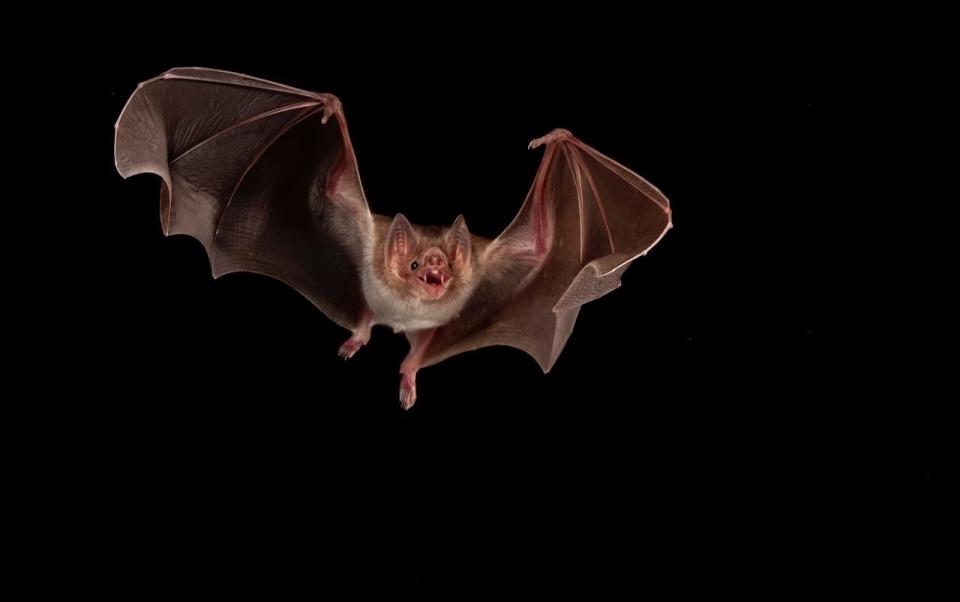A question for Halloween: Are vampire bats real? | ECOVIEWS
Q. Halloween brings forth some menacing creatures. The scariest to me is Dracula when he is a blood-sucking bat turning people into vampires. It got me wondering: Are vampire bats real? If so, have they been found in the United States? Have you ever seen one?
A. The answer to all three questions is yes. As you note, the fictional Count Dracula bites his victims, extracting blood from them and, not coincidentally, turning them into vampires. Bram Stoker modeled his 1897 novel in part on tales from Romania. Although vampire bats are not native to the Old World, early explorers to the American tropics undoubtedly encountered them and offered anecdotal accounts when they returned home.
More: Hellbenders are signs of healthy trout streams | ECOVIEWS
Vampire bats occur from Mexico to South America. According to the U.S. Geological Survey, a single specimen has been documented in the United States, in south Texas. A Smithsonian publication reported fossils of an extinct vampire bat in Florida.
According to the Florida Museum of Natural History, that species’ razor-sharp teeth indicate it had a “diet limited to blood.” The largest vampire bats today have a wingspan of 8 inches. A fossil vampire bat named Desmodus draculae had a wingspan of 20 inches.
Seeing that hovering outside your window might lead you to believe in accounts of Count Dracula’s powers of transformation. Vampire bats are the only exclusively blood-drinking mammals in the world, coming out at night with pointed teeth to pierce flesh.

Vampire bat saliva has an anticoagulant that increases blood flow, but bats do not actually suck the blood from their victims. Instead, they make tiny incisions and lap up the flow. Any mammal is fair game, but the most common prey are now livestock, birds and humans, depending on which of the three species of vampire bats is out looking for a meal.
A vampire bat can land on a sleeping cow or human and administer a bite that may go unnoticed. Taking a snooze outdoors in vampire bat territory could be hazardous to your health, especially if you have consumed too much alcohol and aren't aware you're being bitten. In addition to the disturbing idea that a blood-slurping mammal has invaded your personal space, some bats carry rabies.
My own experience with vampire bats occurred in Costa Rica one night in a banana plantation when I was looking for frogs and snakes. As I scanned the ground and trees with my flashlight, turning over dead banana leaves with a snake stick, I had the sensation of being watched. I turned, expecting to see someone following me. Nothing there — except a bat.
It hovered 3 feet away, about neck high. It made no sound. More alarmingly, it did not leave but just kept flapping its little wings and staring at me. Or at my carotid artery. I did not see it lick its chops, or whatever hungry bats lick, but it was clearly looking at me, sizing me up, perhaps thinking how tasty I would be.
Anyone who'd read “Dracula” might be excused for assuming the black-tuxedoed man had turned into a bat that planned to turn me into the living dead. I had read "Dracula." Whatever the bat's plan, I knew concern for my welfare was not part of it.
I raised my snake stick and wiggled it at the bat. As it flitted away into the darkness, I began walking again. When I looked back, it had returned, undaunted by my feeble attempt to discourage it from partaking of a tasty meal. I wondered if it was waiting for me to lie down and sleep so it could dine. Walking through a pitch-dark banana plantation can stir the imagination, and mine was already plenty fertile. I headed back to camp.
Dracula, witches and ghosts are the make-believe part of Halloween. Blood-lapping bats are real. What if global warming brings vampire bats into the United States? Now that’s a scary thought.

Whit Gibbons is professor of zoology and senior biologist at the University of Georgia’s Savannah River Ecology Laboratory. If you have an environmental question or comment, email ecoviews@gmail.com.
This article originally appeared on The Tuscaloosa News: A question for Halloween: Are vampire bats real? | ECOVIEWS

